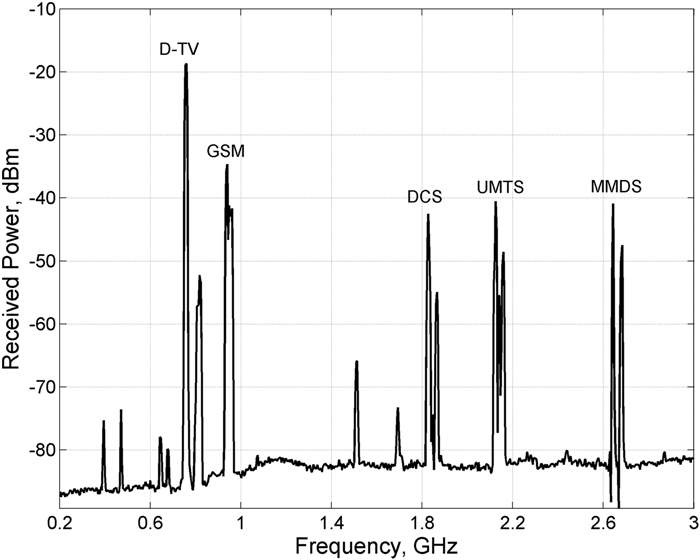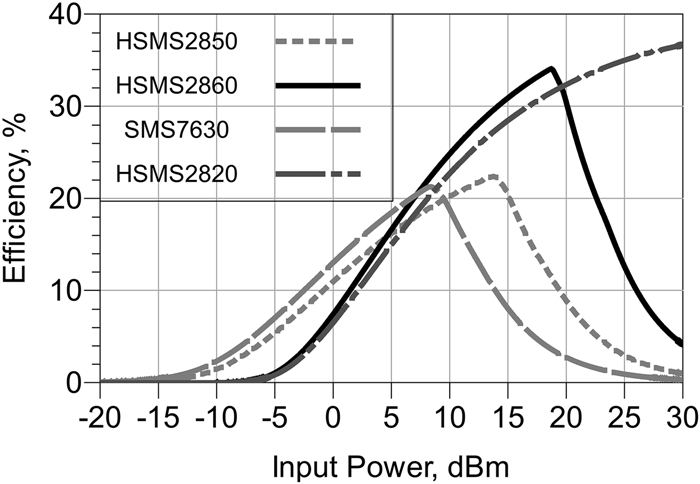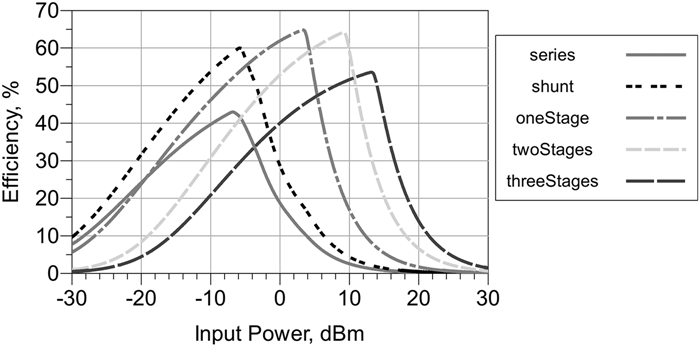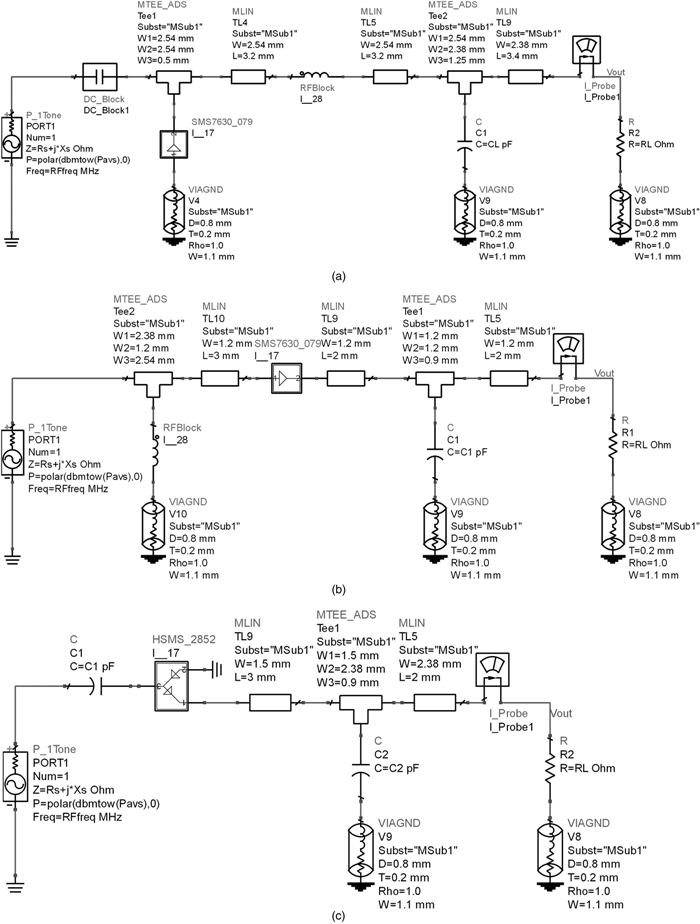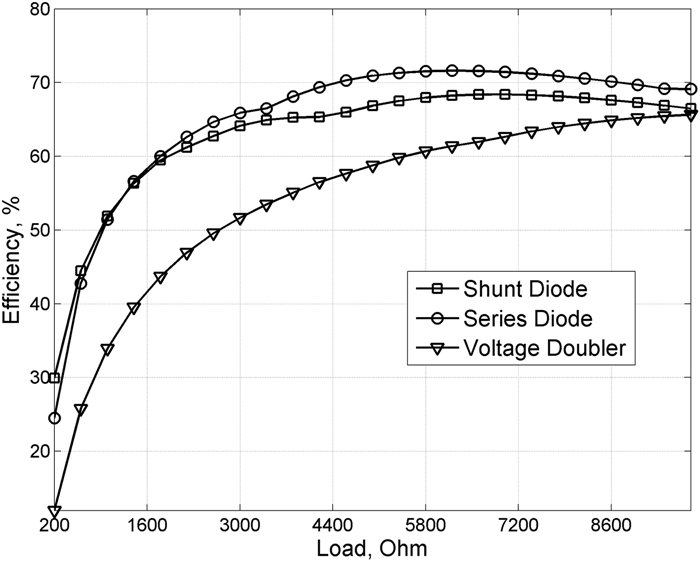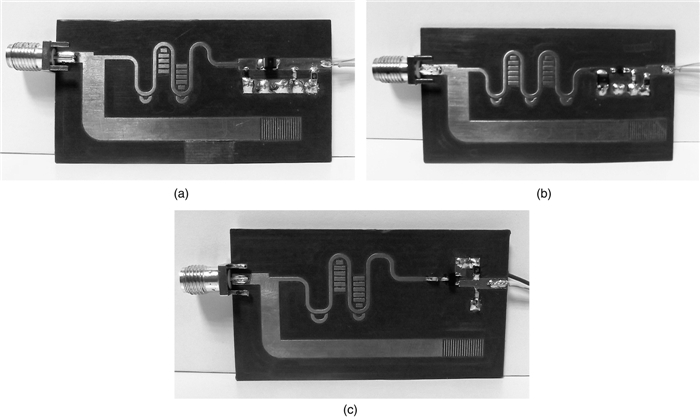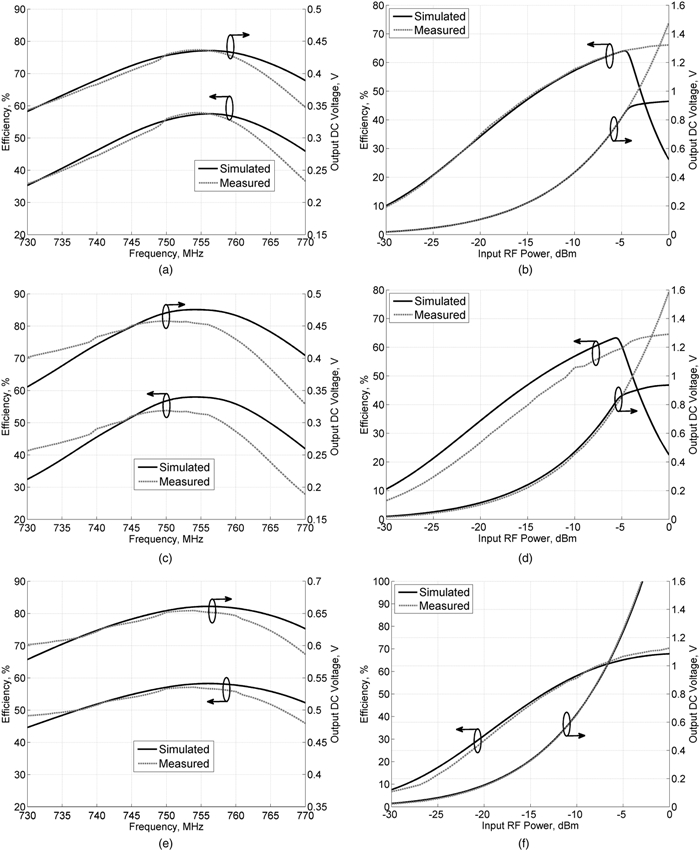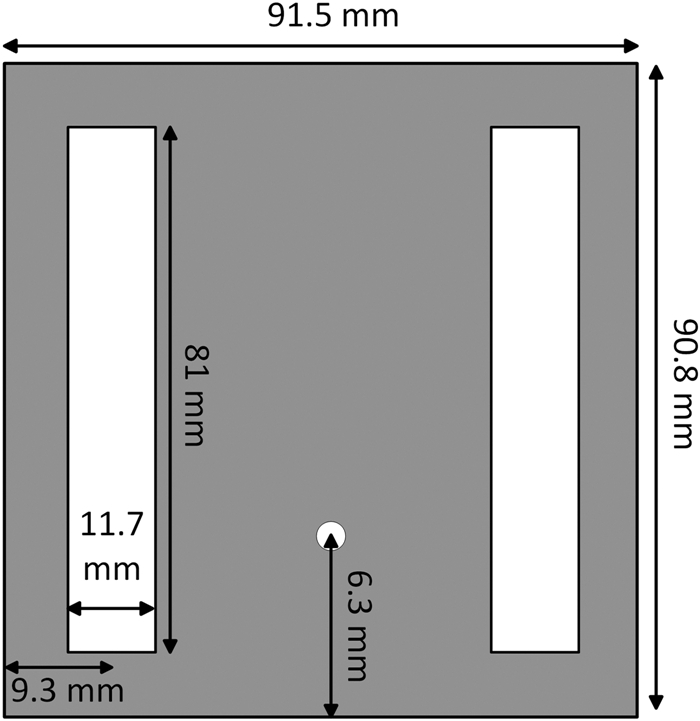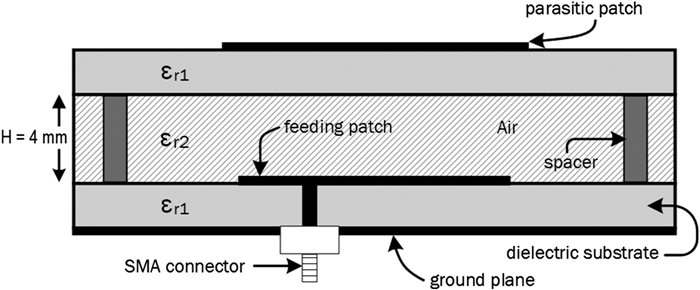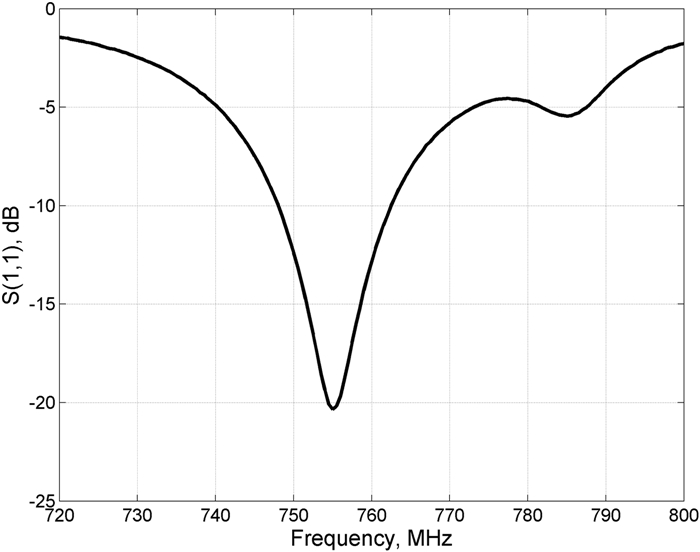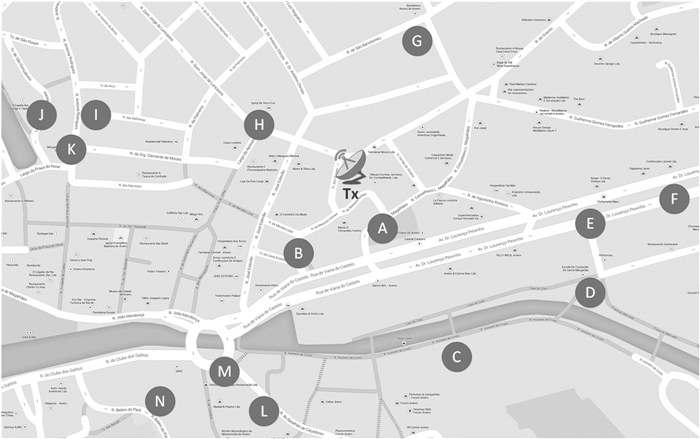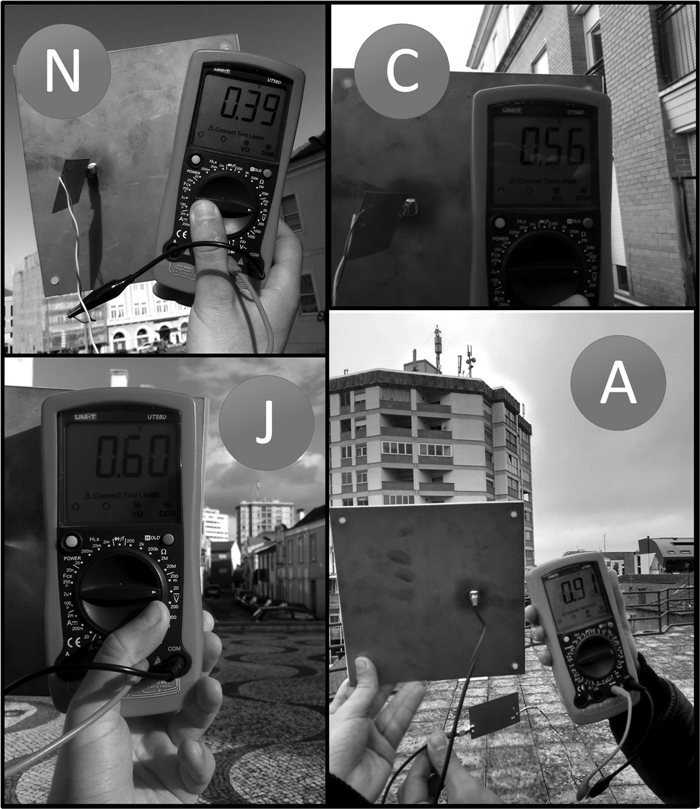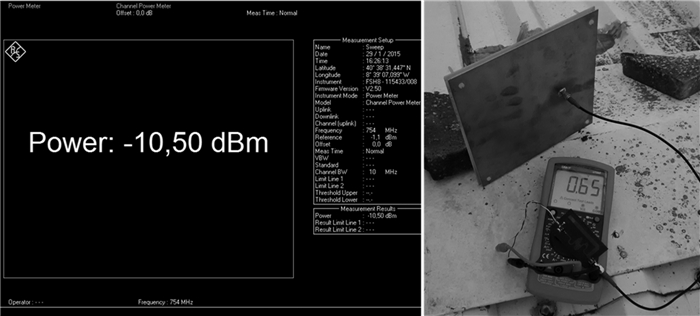High-efficiency D-TV energy harvesting system for low-input power
-
1.
Departamento de Electrónica, Instituto de Telecomunicações, Telecomunicações e Informática, Universidade de Aveiro, Aveiro, Portugal. Phone: +351 234 377 900
-
2.
Instituto Superior de Engenharia de Lisboa, Lisboa, Portugal
More Information
-
Author Bio:
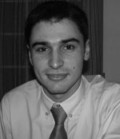 Tiago Moura
Tiago Moura received the Master degree in Electronics and Telecommunications Engineering from the University of Aveiro. In 2014, he joined the Institute of Telecommunications as a researcher, where its main activities include the design and measurement of MMICs for space applications. His main research interests are energy harvesting, design of non-linear devices, and WPT.
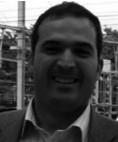 Nuno Borges de Carvalho
Nuno Borges de Carvalho received the Ph.D. degree in Electronics and Telecommunications Engineering from the University of Aveiro in 2000. He is currently a Full Professor, IEEE Fellow, and a Senior Research Scientist with the Institute of Telecommunications, University of Aveiro. He co-authored Intermodulation in Microwave and Wireless Circuits (Artech House, 2003). He has been a reviewer and author of over 100 papers in magazines and conferences. He is an Associate Editor for the Cambridge Wireless Power Transfer Journal. He co-holds four patents. His main research interests include software-defined radio front-ends, WPT, non-linear distortion analysis in microwave/wireless circuits and systems, and measurement of non-linear phenomena. He is an associate editor for the IEEE Transactions on Microwave Theory and Techniques and IEEE Microwave Magazine. Dr. Borges Carvalho is the chair of the IEEE MTT-11 Technical Committee. He is the chair of the URSI-Portugal Metrology Group.
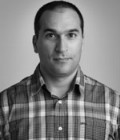 Pedro Pinho
Pedro Pinho was born in Vale de Cambra, Portugal in 1974. He received the Master's degree in Electronics and Telecommunications Engineering and the Ph.D. degree from the University of Aveiro in 1997, 2000, and 2004, respectively. He is currently a Professor Adjunto at the Department of Electrical Telecommunications and Computers Engineering in Instituto Superior de Engenharia de Lisboa, in Instituto Politécnico de Lisboa, and a Senior Member of the research staff at the Institute of Telecommunications. His current research interest is in antennas for location systems, reconfigurable antennas, and antenna design for passive sensors in non-conventional materials. He has authored or co-authored more than 100 research papers in conferences and international journals and book chapters
-
Corresponding author:
T. Moura Email: tiagomoura@ua.pt
-
Abstract
In this work, a high-efficiency radio-frequency energy-harvesting system that takes use of the Portuguese Digital Television signal (750–758 MHz) to obtain DC power is proposed. To be useful, it is optimized to operate at low-power conditions. For the rectifier, three different solutions are presented: a single-series diode, a single-shunt diode, and a voltage-doubler configuration. The efficiency is similar for the three rectifiers – about 54% with a sine-wave excitation and −10.5 dBm of input power. Field measurements with the voltage-doubler have shown 63% efficiency for the same input power.
-
About this article
Cite this article
Moura T, de Carvalho NB, Pinho P. 2016. High-efficiency D-TV energy harvesting system for low-input power. Wireless Power Transfer 3(1): 34-42 doi: 10.1017/wpt.2015.22
|
Moura T, de Carvalho NB, Pinho P. 2016. High-efficiency D-TV energy harvesting system for low-input power. Wireless Power Transfer 3(1): 34-42 doi: 10.1017/wpt.2015.22
|









 Tiago Moura received the Master degree in Electronics and Telecommunications Engineering from the University of Aveiro. In 2014, he joined the Institute of Telecommunications as a researcher, where its main activities include the design and measurement of MMICs for space applications. His main research interests are energy harvesting, design of non-linear devices, and WPT.
Tiago Moura received the Master degree in Electronics and Telecommunications Engineering from the University of Aveiro. In 2014, he joined the Institute of Telecommunications as a researcher, where its main activities include the design and measurement of MMICs for space applications. His main research interests are energy harvesting, design of non-linear devices, and WPT.  Nuno Borges de Carvalho received the Ph.D. degree in Electronics and Telecommunications Engineering from the University of Aveiro in 2000. He is currently a Full Professor, IEEE Fellow, and a Senior Research Scientist with the Institute of Telecommunications, University of Aveiro. He co-authored Intermodulation in Microwave and Wireless Circuits (Artech House, 2003). He has been a reviewer and author of over 100 papers in magazines and conferences. He is an Associate Editor for the Cambridge Wireless Power Transfer Journal. He co-holds four patents. His main research interests include software-defined radio front-ends, WPT, non-linear distortion analysis in microwave/wireless circuits and systems, and measurement of non-linear phenomena. He is an associate editor for the IEEE Transactions on Microwave Theory and Techniques and IEEE Microwave Magazine. Dr. Borges Carvalho is the chair of the IEEE MTT-11 Technical Committee. He is the chair of the URSI-Portugal Metrology Group.
Nuno Borges de Carvalho received the Ph.D. degree in Electronics and Telecommunications Engineering from the University of Aveiro in 2000. He is currently a Full Professor, IEEE Fellow, and a Senior Research Scientist with the Institute of Telecommunications, University of Aveiro. He co-authored Intermodulation in Microwave and Wireless Circuits (Artech House, 2003). He has been a reviewer and author of over 100 papers in magazines and conferences. He is an Associate Editor for the Cambridge Wireless Power Transfer Journal. He co-holds four patents. His main research interests include software-defined radio front-ends, WPT, non-linear distortion analysis in microwave/wireless circuits and systems, and measurement of non-linear phenomena. He is an associate editor for the IEEE Transactions on Microwave Theory and Techniques and IEEE Microwave Magazine. Dr. Borges Carvalho is the chair of the IEEE MTT-11 Technical Committee. He is the chair of the URSI-Portugal Metrology Group.  Pedro Pinho was born in Vale de Cambra, Portugal in 1974. He received the Master's degree in Electronics and Telecommunications Engineering and the Ph.D. degree from the University of Aveiro in 1997, 2000, and 2004, respectively. He is currently a Professor Adjunto at the Department of Electrical Telecommunications and Computers Engineering in Instituto Superior de Engenharia de Lisboa, in Instituto Politécnico de Lisboa, and a Senior Member of the research staff at the Institute of Telecommunications. His current research interest is in antennas for location systems, reconfigurable antennas, and antenna design for passive sensors in non-conventional materials. He has authored or co-authored more than 100 research papers in conferences and international journals and book chapters
Pedro Pinho was born in Vale de Cambra, Portugal in 1974. He received the Master's degree in Electronics and Telecommunications Engineering and the Ph.D. degree from the University of Aveiro in 1997, 2000, and 2004, respectively. He is currently a Professor Adjunto at the Department of Electrical Telecommunications and Computers Engineering in Instituto Superior de Engenharia de Lisboa, in Instituto Politécnico de Lisboa, and a Senior Member of the research staff at the Institute of Telecommunications. His current research interest is in antennas for location systems, reconfigurable antennas, and antenna design for passive sensors in non-conventional materials. He has authored or co-authored more than 100 research papers in conferences and international journals and book chapters 



